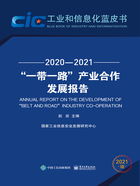
B.2
“一带一路”产业合作形势展望
彭静怡[1]
摘 要:“一带一路”建设持续深化中国与沿线各国的产业合作交流、加速产业链融合,数字化、绿色化可持续发展成为产业合作共识。但在建设过程中面临着来自地缘政治冲突、信息网络安全等方面的挑战,项目建设、企业生产、商品流通、融资活动等均存在风险。未来,“一带一路”需要结合自身产业基础与经济发展规划,以创新发展理念为项目建设铺平道路,采取高质量、高水平、高标准、大规模合作发展策略以减低区域工业基础、经济水平发展不平衡的影响,提高产业合作效率和水平,为对接国际标准体系做足准备,推动沿线国家合作协同发展。
关键词:“一带一路”倡议;产业合作;高质量发展
Abstract: Under “The Belt and Road” Initiative, the industrial cooperation and exchanges between China and countries along “The Belt and Road” have been continuously deepened, and the integration of industrial chains has been accelerated. Digital, green and sustainable development has become the consensus of industrial cooperation. However, in the process of construction, there are also challenges from geopolitical conflicts, information network security and other aspects, as well as risks in project construction, enterprise production, commodity circulation and financing activities. In the future, we need to combine our own industrial base and economic development planning, pave the way for project construction with innovative development concept, implement high-quality, high-level, high-standard and large-scale cooperation development strategy to reduce the impact of unbalanced development of regional industrial base and economic level, and improve the efficiency and level of industrial cooperation, so as to make full preparations for aligning ourselves with the international standard system and promote cooperation and coordinated development among countries along the “Belt and Road”.
Keywords: “The Belt and Road” Initiative; Industrial Cooperation; High-Quality Development
“一带一路”倡议自提出以来得到稳步推进,海外项目合作取得了巨大成果,迈向了高质量发展阶段。在新的发展阶段中,中国和沿线国家在产业开发、园区建设等方面的合作逐渐深化,为推进“一带一路”产能合作奠定了良好基础。“一带一路”产能合作取得了积极进展,在“互联互通、政策沟通、设施联通、贸易畅通、资金融通、民心相通”方面成果显著。在全球产业链加速调整、经济波动加聚的背景下,亟须中国和沿线国家密切合作、积极应对、把握机遇,以现实需求和共同利益为导向、以可持续发展和高质量建设为目标,为应对公共危机与生态环境改善贡献智慧,为加快中国与沿线国家协同发展、推动“一带一路”共赢发展贡献力量。